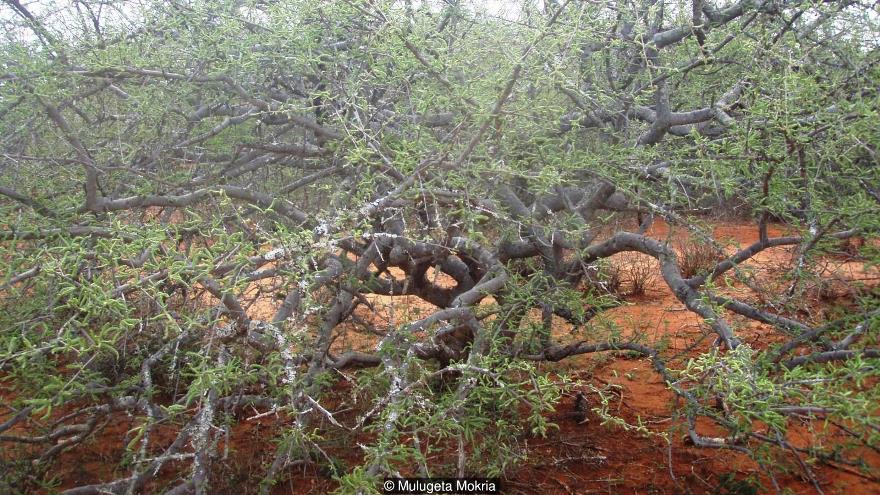New research on a particular species of frankincense tree has revealed it to be a possible path to climate resilience, reforestation of degraded lands, and economic revitalization in the poverty-stricken, drought-ridden Horn of Africa.
One factor in the tree’s success is that it is good at trapping moisture to avoid damage from drought. That means it responds easily to a changing climate, says lead author Mulugeta Mokria of the World Agroforestry Centre in Nairobi, Kenya.
“These characteristics gives it the potential to restore degraded drylands of Ethiopia and eastern Africa,” says Mokria. “This species can also be used in restoration schemes where climate is similar.”
This could in turn help stimulate the local economy, increase frankincense production and improve the lives of local people who depend on the forest for their livelihoods. The resin of the frankincense tree is harvested and sold worldwide as a form of incense, often used in religious ceremonies.
Growing more of these trees could have another less obvious benefit. It could increase rainfall in the Congo Basin, as studies have suggested that rainfall there is a direct consequence of moisture evaporating from vegetation in east Africa.
Research Abstract:
Boswellia neglecta is a frankincense-producing tree species dominantly found in the dry woodlands of southeastern Ethiopia. Currently, the population of this socio-economically and ecologically important species is threatened by complex anthropogenic and climate change related factors. Evaluation of tree age and its radial growth dynamics in relation to climate variables helps to understand the response of the species to climate change. It is also crucial for sustainable forest resource management and utilization. Dendrochronological and remote-sensing techniques were used to study periodicity of wood formation and leaf phenology and to assess the growth dynamics of B. neglecta.
The results show that B. neglecta forms two growth rings per year in the study area. The growth ring structure is characterized by larger vessels at the beginning of each growing season and smaller vessels formed later in the growing season, suggesting adaptation to decreasing soil moisture deficits at the end of the growing season. Seasonality in cambial activity matches with a bimodal leaf phenological pattern. The mean annual radial growth rate of B. neglecta trees is 2.5 mm. Tree age varied between 16 and 28 years, with an average age of 22 years. The young age of these trees indicates recent colonization of B. neglecta in the study region.
The growth rate and seasonal canopy greenness (expressed by Normalized Difference Vegetation Index – NDVI) were positively correlated with rainfall, suggesting that rainfall is the main climatic factor controlling growth of B. neglecta. The observed temporal changes in leaf phenology and vessel size across the growth rings indicate that the species is drought tolerant. Therefore, it can be regarded as a key tree species for restoration of moisture-related limited areas across the Horn of Africa.
Photo credit: Mulugeta Mokria

